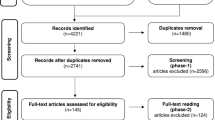Abstract
Objective: To observe the clinical effect of tuina plus Baixiao moxibustion in the treatment of temporomandibular joint dysfunction syndrome (TJDS).
Methods: A total of 70 TJDS patients who met the inclusion criteria were randomized into an observation group and a control group by flipping a coin, with 35 cases in each group. Patients in the observation group were treated with tuina plus Baixiao moxibustion, while patients in the control group received oral intake of diclofenac potassium (75 mg/pill), 1 pill after every dinner. Both tuina and Baixiao moxibustion were done once a day during treatment. The therapeutic evaluation was evaluated after 10 treatments in both groups. The maximum mouth opening distance and visual analog scale (VAS) were observed before and after treatment, and the therapeutic efficacy was also compared.
Results: After treatment, the maximum mouth opening distance and VAS improved in both groups (all P<0.05); both items in the observation group were superior to those in the control group (both P<00.05). The total effective rate was 91.4% in the observation group, versus 74.3% in the control group, and the between-group comparison of the total effective rate showed statistical significance (P<0.05).
Conclusion: Tuina plus Baixiao moxibustion can effectively improve TJDS patient’s temporomandibular joint function and alleviate pain, with better efficacy than oral intake of diclofenac potassium.
摘要
目的: 观察推拿结合百笑灸治疗颞颌关节功能紊乱综合征(TJDS)的临床疗效。
方法: 将符合纳入标准的 70例TJDS患者用抛币法随机分为观察组和对照组, 每组35例。观察组采用推拿结合百笑灸治疗, 推拿和百笑灸均 每日1次。对照组采用口服双氯芬酸钠缓释剂(75毫克/片)治疗, 每日晚餐后口服1片。两组均治疗10次后进行疗效 评价。观察两组患者治疗前后最大主动张口度和视觉模拟量表(VAS), 比较两组临床疗效。
结果: 治疗后, 两组最 大主动张口度和VAS评分与同组治疗前均有统计学差异(均P<0.05); 观察组最大主动张口度和VAS评分与对照组 差异均有统计学意义(均P<0.05)。观察组总有效率为91.4%, 对照组总有效率为74.3%, 两组疗效差异有统计学意 义(P<0.05)。
结论: 推拿结合百笑灸治疗能有效改善TJDS患者的颞颌关节功能并缓解疼痛, 其疗效优于口服双氯 芬酸钠缓释剂。
Similar content being viewed by others
References
Ma XC. Basic and Clinic of Temporomandibular Joint Diseases. Beijing: People’s Medical Publishing House, 2000: 39–50.
Qiu WL, Zhang ZK, Zhang ZY. Oral and Maxillofacial Surgery. 6th Edition. Beijing: People’s Medical Publishing House, 2008: 320.
Huang C, Han L, Zhao BX. Innovation and standardization of acupuncture apparatus from the view of clinical application of Baixiao moxibustion. Shizhen Guoyi Guoyao, 2017, 28(2): 485–487.
Makofsky HW. Spinal Manual Therapy: An Introduction to Soft Tissue Mobilization, Spinal Manipulation, Therapeutic and Home Exercises. New Jersey: SLACK Inc., 2010: 124–136.
Li ZL, An JX, Ni JX. Study on Treatment of Clinical Pain. Tianjin: Tianjin Science and Technology Press, 2003: 387.
Zhang ZK, Fu MK. Temporomandibular Arthrosis. Beijing: People’s Medical Publishing House, 1987: 94.
Cheng HJ, Wang L, Xie CJ. Clinical research on ultra-laser plus acupuncture for the treatment of temporomandibular joint dysfunction syndrome. Xiandai Zhongxiyi Jiehe Zazhi, 2010, 19(2): 170–171.
Ma XC, Zhang ZK. Nomination, diagnosis and treatment principle for TJDS. Zhonghua Kouqiang Yixue Zazhi, 2002, 37(4): 241.
Chen G, Bi DY, Xiang J, Ouyang LZ, Xue ZH, Li HL, Chen JJ, Li TL. Thirty cases of temporomandibular joint dysfunction syndrome treated with water acupotome minimal invasion techniques at Xiaguan (ST 7). Zhongguo Zhen Jiu, 2017, 37(4): 394.
Ji J, Wang W. A preliminary study on Jiache (ST 6) acupoint. Jilin Zhongyiyao, 2014, 34(1): 86–88.
Jing YJ, Huang BL, Xie Q. Research on treating ENT diseases with Hegu (LI 4). Zhongyi Erbihou Kexue Yanjiu, 2008, 4(7): 34.
Yan XH, Yan JT, Gong L. The genres and modern study of one-thumb Tui-pushing manipulation. Henan Zhongyi, 2009, 29(5): 515–518.
Shen ZF, Shen QH, Jin YQ, Ge J, Gong XF. Observations on the efficacy of warm needling plus qi-concentrated single-finger pushing in treating temporomandibular joint disorder. Shanghai Zhenjiu Zazhi, 2014, 33(4): 335–336.
Chen QL, Huang SY, Feng L, Zhu XX, Shen SY. Clinical observations on acupoint pressing plus gentle moxibustion for intervention in lower limb swelling after total knee arthroplasty. Shanghai Zhenjiu Zazhi, 2015, 34(10): 990–992.
Chen LR, Zhang YC. Clinical progresses on temporomandibular joint dysfunction syndrome. Hunan Zhongyi Zazhi, 2012, 28(4): 170–171.
Wu HG. Chinese Moxibustion. Shanghai: Shanghai Scientific & Technical Publishers, 2006: 86.
Xu YQ. A primary research on the skin temperature and blood flow pattern of moxibustion on meridian line. Shanghai Zhenjiu Zazhi, 2016, 35(6): 761–763.
Li XD, Que QH, Qiu ZY. Fifty cases of temporomandibular joint dysfunction syndrome treated with electroacupuncture and moxibustion. Fujian Zhongyiyao, 2018, 49(3): 71–72.
Huang C, Zhao BX. Mechanism and characteristics of a new moxibustion apparatus: Baixiao moxibustion. Shanghai Zhenjiu Zazhi, 2015, 34(2): 188.
Xu Q, Xiong ZF, Xie CX, Li SJ. Therapeutic observation of Baixiao moxibustion plus electroacupuncture for lumbar intervertebral disc herniation. Shanghai Zhenjiu Zazhi, 2018, 37(3): 316–319.
Author information
Authors and Affiliations
Corresponding author
Additional information
Conflict of Interest
The authors declared that there was no potential conflict of interest in this article.
Statement of Informed Consent
Informed consent was obtained from the patients in this study.
Rights and permissions
About this article
Cite this article
Ding, Ch., Zhang, Q. & Wei, Hq. Clinical observation on tuina plus Baixiao moxibustion for temporomandibular joint dysfunction syndrome. J. Acupunct. Tuina. Sci. 17, 445–450 (2019). https://doi.org/10.1007/s11726-019-1137-4
Received:
Accepted:
Published:
Issue Date:
DOI: https://doi.org/10.1007/s11726-019-1137-4
Keywords
- Tuina
- Massage
- Moxibustion Therapy
- Indirect Moxibustion
- Moxa Cone Moxibustion
- Baixiao Moxibustion
- Visual Analog Scale
- Temporomandibular Joint Dysfunction Syndrome



